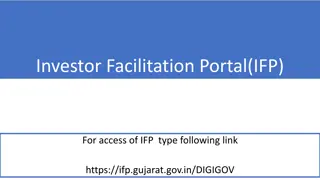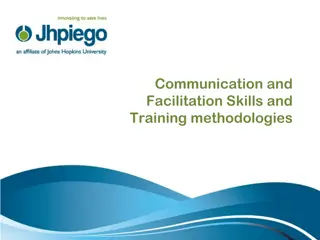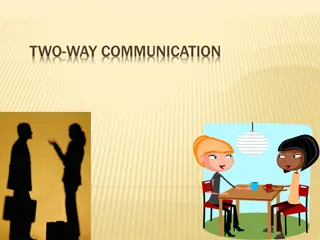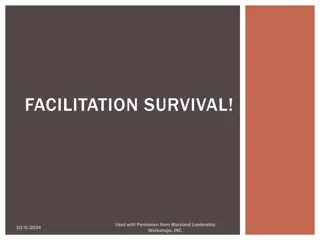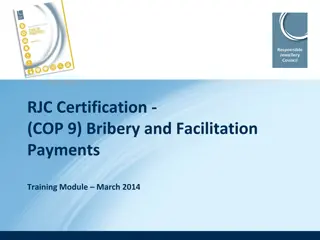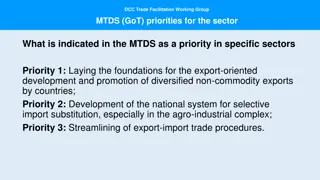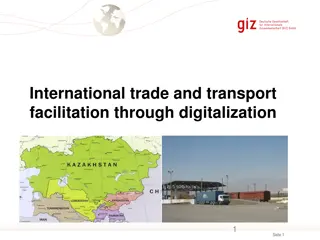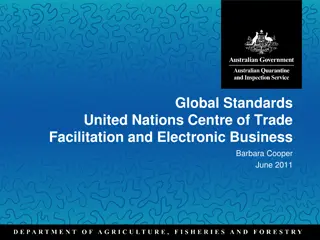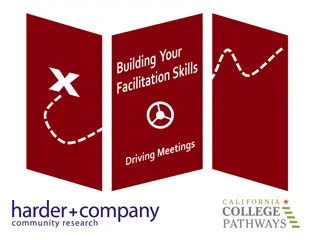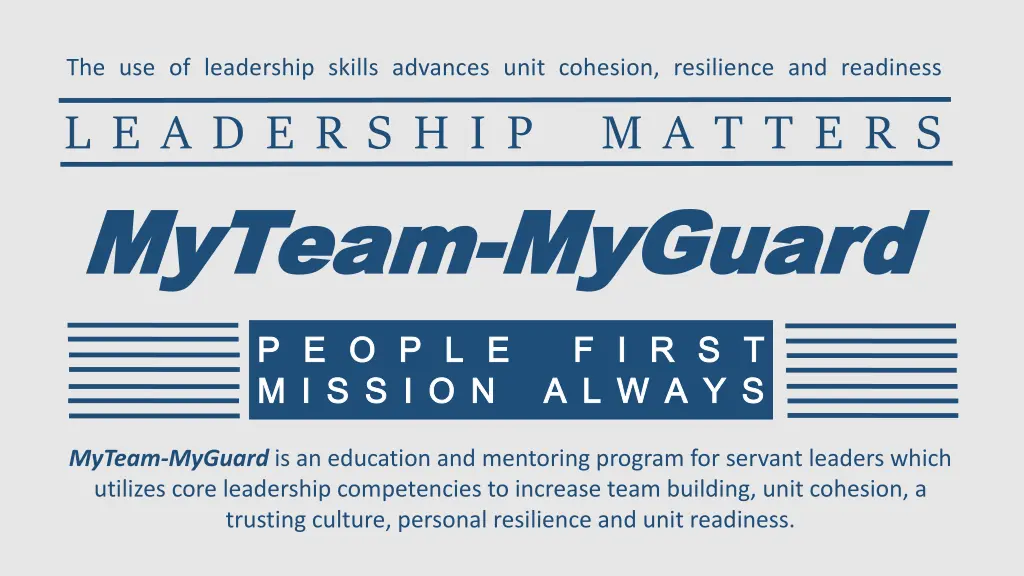
Core Leadership Competencies for Team Building and Unit Readiness
"Enhance team building, unit cohesion, and readiness through MyTeam-MyGuard program, focusing on leadership skills, facilitation strategies, and social health work group dynamics. Learn how to use bridging techniques effectively in group discussions."
Download Presentation

Please find below an Image/Link to download the presentation.
The content on the website is provided AS IS for your information and personal use only. It may not be sold, licensed, or shared on other websites without obtaining consent from the author. If you encounter any issues during the download, it is possible that the publisher has removed the file from their server.
You are allowed to download the files provided on this website for personal or commercial use, subject to the condition that they are used lawfully. All files are the property of their respective owners.
The content on the website is provided AS IS for your information and personal use only. It may not be sold, licensed, or shared on other websites without obtaining consent from the author.
E N D
Presentation Transcript
The use of leadership skills advances unit cohesion, resilience and readiness L E A D E R S H I P M A T T E R S MyTeam MyTeam- -MyGuard MyGuard P E O P L E P E O P L E F I R S T M I S S I O N M I S S I O N A L W A Y S F I R S T A L W A Y S MyTeam-MyGuard is an education and mentoring program for servant leaders which utilizes core leadership competencies to increase team building, unit cohesion, a trusting culture, personal resilience and unit readiness.
L E A D E R S H I P M A T T E R S Facilitation Skills: Big Six Facilitation Skills: Big Six LEARNING OBJECTIVE Action Improve skill and confidence in delivering Army instruction using facilitation techniques that support adult learning. Standard Demonstrate the effective use of facilitation strategies.
MyTeam MyTeam- -MyGuard MyGuard People First Mission Always People First Mission Always Social Health Work Group Social Health Work Group Facilitation Strategies Bridging Think-Pair-Share Asking Quality Questions Efficient Instructions Conducting Effective Discussions Handling Challenges Effectively CUI
MyTeam MyTeam- -MyGuard MyGuard People First Mission Always People First Mission Always Social Health Work Group Social Health Work Group #1 Bridging Use bridging to: Filter and highlightwhat is right or relevant about what the participant stated. Identify the portion of the response you want to reinforce and use that to move the conversation along. CUI
MyTeam MyTeam- -MyGuard MyGuard People First Mission Always People First Mission Always Social Health Work Group Social Health Work Group Practical Exercise: Bridging Scenario You are facilitating a suicide prevention training, and the group is having a discussion on stigma prevention. A participant starts telling a story about someone he knows who sought help and it ended her career. You see lots of heads nodding and other participants start jumping in to tell their stories. #1 BRIDGING How can you use bridging to regain control of the conversation in a way that doesn t shut down participants? What are some statements you could make to tie what is being said to the topic at hand? What other statements could you make to move the conversation forward? CUI
MyTeam MyTeam- -MyGuard MyGuard People First Mission Always People First Mission Always Social Health Work Group Social Health Work Group #2 Think-Pair-Share Some benefits: Engages everyone even if they don t share with the large group. Gives participants time to think about their responses before contributing to the large group discussion. Can help people feel more comfortable sharing their ideas. CUI
MyTeam MyTeam- -MyGuard MyGuard People First Mission Always People First Mission Always Social Health Work Group Social Health Work Group Practical Exercise: Think-Pair-Share Scenario #2 THINK PAIR-SHARE Think about a recent briefing or training that you would describe as awful; with low facilitator engagement and you leaving the training more confused then when you arrived. Think, then come together in small groups and discuss the below. (Please leave out names of individual facilitators) Identify at east one potential topic/activity within the training where the facilitator could have implemented think-pair-share. Why do you think it would have been beneficial to use think-pair-share? CUI
MyTeam MyTeam- -MyGuard MyGuard People First Mission Always People First Mission Always Social Health Work Group Social Health Work Group #3 Asking Quality Questions Asking quality questions is important for generating participation and group discussions. Ask quality questions by: Using closed-ended questions for a check on learning or to get a group consensus. Using open-ended questions to generate discussion. Restating your question when it seems unclear. Polling the audience to get a show of hands, then asking the participants to provide examples or explain their rationale. Letting the participants know, when appropriate, if there is no right or wrong answer for this question, which can ease the pressure on the group. CUI
MyTeam MyTeam- -MyGuard MyGuard People First Mission Always People First Mission Always Social Health Work Group Social Health Work Group Practical Exercise: Asking Quality Questions Scenario You have been asked to provide instruction to your unit on a new Army Regulation which requires all Soldiers in the Army Band to grow their hair out to achieve the 80 s Hair Band look. The briefing includes requirements on the type hair spray to be utilized and images depicting the most efficient styling processes to achieve the desire end state. #3 Quality Questions Identify an open-ended question to generate discussion within the briefing. Create 1 learning objective you want your students to achieve. Backwards plan a close ended question to ensure your audience has achieved the learning objective. CUI
MyTeam MyTeam- -MyGuard MyGuard People First Mission Always People First Mission Always Social Health Work Group Social Health Work Group #4 Efficient Instructions Efficient instructions for exercises are clear and concise directions resulting in participants understanding of the intent of the exercise, what actions they need to take, and how long they have to complete the work. Include timings in your instructions that helps participants understand how in-depth their discussions should be. Provide time prompts such as 1 minute left to keep the group on track during activities. Demonstrate lengthy instructions by role playing with another individual. This approach is more engaging than verbally reciting directions. End with exactly what students need to do to get started (instruction #1). CUI
MyTeam MyTeam- -MyGuard MyGuard People First Mission Always People First Mission Always Social Health Work Group Social Health Work Group Practical Exercise: Efficient Instructions Scenario You have been asked to provide a briefing to your unit on required completion of the Azimuth (formally known as GAT). You want the entire class to break down into teams of 3-5 PAX, complete the 4 discussion questions provided to them and elect a team leader who will provide a summary of the small group responses to the larger group. You have allowed 5 minutes for small group discussion. #4 Efficient Instructions Practice providing efficient instructions based upon the scenario description. Be prepared to discuss what went well and what you would like to improve upon. CUI
MyTeam MyTeam- -MyGuard MyGuard People First Mission Always People First Mission Always Social Health Work Group Social Health Work Group #5 Conducting Effective Discussions Discussions can sometimes get off track. It is important to be purposeful when leading a conversation about a particular topic or activity. Elements of an Effective Discussion: Learner-centric Keep the conversation moving Summarize the discussion CUI
MyTeam MyTeam- -MyGuard MyGuard People First Mission Always People First Mission Always Social Health Work Group Social Health Work Group Practical Exercise: Conducting Effective Discussions Scenario #5 You are facilitating a safety brief which is inclusive of demonstrating the Army s 22 required steps for opening a door. As the facilitator of the safety brief, you are just about to start large group discussion, including AAR comments, on the practical demonstration of the 22 steps. Conducting Effective Discussion Independently identify 2 opening questions you could ask to start the discussion (not a small group exercise). Be prepared to discuss your questions. Why you chose the questions you did. What responses were you hoping to illicit because of asking the questions you developed. CUI
MyTeam MyTeam- -MyGuard MyGuard People First Mission Always People First Mission Always Social Health Work Group Social Health Work Group #6 Handling Challenges Effectively There can be many challenges that occur when teaching a class. Having strategies in handling challenges that are likely to arise can help you be more prepared. Handling difficult questions: Prompt the group to brainstorm ideas. It s okay to say you don t know; make sure to follow up later. Managing challenging participants (quiet, confrontational, oversharing): Encourage strategies such as Think-Pair-Share and the parking lot. Establish ground rules to manage expectations and protect privacy. Acknowledge the response but ask for others responses. CUI
MyTeam MyTeam- -MyGuard MyGuard People First Mission Always People First Mission Always Social Health Work Group Social Health Work Group Practical Exercise: Handling Challenges Effectively Scenario SGT Snuffy is facilitating an annual brief on the three steps of Ask, Care, Escort (ACE) Suicide Prevention. Unknown to SGT Snuffy, one of the Soldier students is a is a trained clinical counselor. This Soldier has dominated the group discussion, provided clinical diagnosis, therapeutic techniques, and personal stories resulting in a much deeper dive into mental health treatment then the ACE learning objectives called for; and the 30-minute brief has been turned into an hour. #6 Handling Challenges Effectively Break into small teams to identify how SGT Snuffy could more effectively manage the challenges presented above, thus resulting in: Meeting the learning objectives of ACE. Staying within identified time frames. Be prepared to discuss your brainstorming ideas with the larger group. CUI
L E A D E R S H I P M A T T E R S Facilitation Skills: Big Six Facilitation Skills: Big Six LEARNING OBJECTIVE Action Improve skill and confidence in delivering Army instruction using facilitation techniques that support adult learning. Standard Demonstrate the effective use of facilitation strategies.
L E A D E R S H I P M A T T E R S For more NCO/Officer Professional Development Modules For more NCO/Officer Professional Development Modules Go to Go to www.ndguard.nd.gov www.ndguard.nd.gov On the resource tab (top), drop down, click Ready and Resilient, then look for On the resource tab (top), drop down, click Ready and Resilient, then look for Professional Development Training Library Professional Development Training Library







